
Just a quick post to lighten your day. According to this new promo, the US Open is using Bhangra to promote the upcoming events.
The video was filmed a few days ago in Central Park by ESPN.
Bhangra was also part of the Olympics closing ceremony in London. It makes you wonder though – how can we get more Punjabi athletes represented in sports? And why the sudden interest in Bhangra… ?
A friend recently forwarded me the following video.

A few notes may suffice. What is unusual is not the ‘performative’ style that has become modern (post-1947) bhangra, nor even the type of stage (we saw Signature earlier on Britain’s Got Talent that achieve the highest level of success and American teams attempting much of the same), however what makes this particular performance unique is the location and performers. Far from UK and the US with huge Punjabi Sikh diasporic populations, here we see a performance in Colombia by two non-Punjabi performers.
An exhibition showcasing British Bhangra music and Culture, titled ‘Soho Road to the Punjab’, will be crossing the pond from the UK to New York City on March 18th 2011 at 6pm. The USA version of the exhibition, Soho Road – Five Rivers to Five Boroughs, will be the world’s first visual arts exhibition inspired by Bhangra music and culture held outside of the UK. The event is being hosted by 92YTribeca and is free to the public.
Originally debuting in Birmingham, UK, Soho Road to the Punjab is an exhibition that includes photography, album sleeves, promotional art and rare prints from South Asian media. This contemporary archive uncovers the worldwide Bhangra phenomenon, showcasing individuals who have championed the UK and USA Bhangra scene.
“Soho Road – from the Five Rivers to the Five Boroughs” is a gift of a title. The Punjab is, of course, the Land of the Five Rivers, while New York iconically comprises Brooklyn, Queens, Manhattan, Staten Island and the Bronx. This is a symmetry just too much too leave alone – it’s a sign! Queens is the largest and the most diverse, and famous as the birthplace of bebop and jazz. Queens also has the largest Sikh population outside California and the highest concentration of Indians anywhere in America. Punjabi is in the top ten of the hundred-odd languages spoken locally, and almost half of all South Asians who live in New York live in Queens. The NY experience will shape the show for the USA. [link]
The event will be held at 92YTribeca, 200 Hudson Street, New York. For more information and to view the exhibition online, see the Facebook page.
College bhangra competitions used to be rare. Now, every region is home to multiple competitions.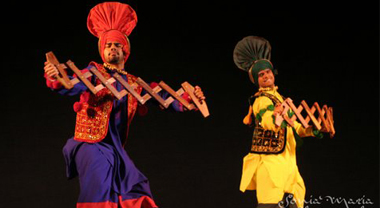
It’s great to see bhangra, as an artform, thriving. Though as a competition, it sometimes feels as though the art is lost amongst the flips and pyramids. However, the last few years have seen a movement going back to the basics of the traditional art form, which has been wonderful to see.
In the crowd of competitions, it is natural to try to distinguish oneself. This year, DC will play host to an invitational bhangra competition called the “Elite 8.” It won’t change bhangra competitions, but it may heighten the profiles of the teams who were invited.
Check out more info for the competition and teams competing, here.
In many ways, the Punjabi-Sikh art scene is expanding exponentially these days. Just 10 years ago, beyond major, mainstream singers, I don’t think there was an arts scene, except maybe in people’s homes. Today, there are film festivals in most major cities like Spinning Wheel and the upcoming Sikh Heritage Film Fest in NY, art exhibits in museums such as the recent exhibit at NY’s Rubin Museum and current exhibit at the London’s Victoria and Albert, and even spoken word shows like When Lions Roar and Lahir. There are independent artists writing thoughtful lyrics, creating original beats, and giving some of our community’s concerns a voice. One of my favorites from this summer is Humble the Poet’s “Singh with Me” featuring Sikh Knowledge.
Yet, while the number and modes of art and artists grows in our community, many mainstream musicians are following 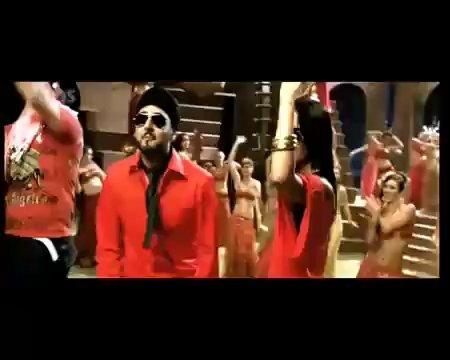 mainstream trends… videos featuring flashy cars rented for the shot, women as props, all at some party. Maybe they’re catering to what they think the audience wants, but the audience is clamoring for what they see as glamorous… which is manufactured to cater to the whims of the audience. This degenerative, downward spiral has led to recent hits such as RDB’s “Om Mangalam.” (See end of post.)
mainstream trends… videos featuring flashy cars rented for the shot, women as props, all at some party. Maybe they’re catering to what they think the audience wants, but the audience is clamoring for what they see as glamorous… which is manufactured to cater to the whims of the audience. This degenerative, downward spiral has led to recent hits such as RDB’s “Om Mangalam.” (See end of post.)
RDB is clearly identifiable as Punjabi-Sikh (let’s not talk about who’s a good or bad Sikh- that’s boring), wearing the now fashionable Palestinian support scarf, and singing Om Mangalam in this video on the homepage of their official site. This is definitely a case of trying to do too much and doing it all badly. There’s nothing inherently wrong with being Punjabi, singing Hindi music (while wearing a Palestinian support scarf), in a video with meaningless lyrics. It’s just not art. Some might call it entertainment, though I’d call it a train wreck.
Guest Blogged by Mewa Singh
No, I didn’t actually grow up with Inderjit Bains, but by the end of the post, you’ll get it.
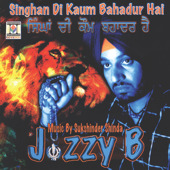 For those that have been following the North American bhangra scene, since its inception (remember, DJ Sunshine, DJ Guru, – I never liked DJ Jiten’s Hindi remixes – and, yes, even DJ Russell Peters), then the name Inderjit Bains needs no introduction.
For those that have been following the North American bhangra scene, since its inception (remember, DJ Sunshine, DJ Guru, – I never liked DJ Jiten’s Hindi remixes – and, yes, even DJ Russell Peters), then the name Inderjit Bains needs no introduction.
In North America, bhangra started with remix DJs in Toronto, but it took Inderjit Singh Bains to help change the scene. It was he, as a pioneer, that helped launch North America’s first true bhangra star – Jazzy B (although at the time, few of us would ever admit to it and spent most of our days hating on Jazzy’s various haircuts on bootleg tape covers).
The trajectory of North American bhangra, influenced in the early 1990s with the explosion of Westcoast gangster rap and especially G-funk, reshaped the global bhangra scene. While UK artists like Apache Indian and Bally Sagoo were doing their own type of hybridity with reggae and bhangra, Inderjit Bains was successful in bridging a ‘folk sound’ with hip-hop influenced bhangra beats. He found a formula. After the success of Jazzy B, he helped launch the career of Central California’s Bhinda Jatt (Bhinda took the early 90s gangster image, much further than Jazzy did, during that time), Madan Maddi and even Sukhshinder Shinda.
My fellow langa(w)r-iter wrote about his latest project – working with a kindred social activist spirit in the artist Taranampreet on her song “Teri Meri Bas: Sat Sri Akal”. While the focus on that post was on the role play women play men’s upkeep of the Sikh appearance (will we ever get a song on the role men play on the women’s upkeep of the Sikh appearance?), I want to take a bit of a different angle.
![]() In all honesty, I have grown tired of bhangra. Gone are my days of competing; gone are my days of organizing; gone are my days of even caring.
In all honesty, I have grown tired of bhangra. Gone are my days of competing; gone are my days of organizing; gone are my days of even caring.
Still sometimes there are things that are newsworthy and call for praise and attention. This is one such story.
The Pioneer Bhangra competition, hosted by CSU East Bay’s Associated Students Association, had originally scheduled their competition at Chabot College Performing Arts Center in Hayward on June 6, 2009. The date should immediately ring alarm bells. It was to fall on the day of the 25th year of commemoration of Operation Bluestar (the Third Sikh Ghallughara) in 1984.
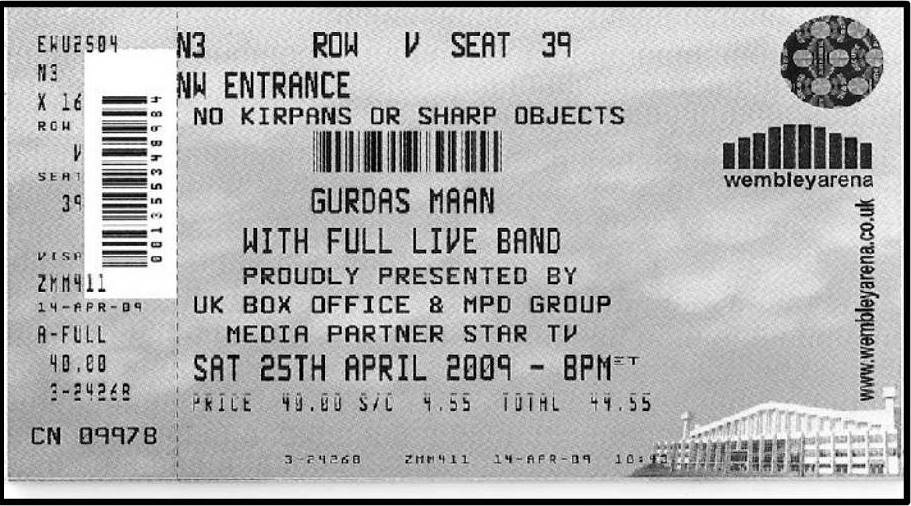
Vaisakhi in the diaspora usually brings two things to those living in cities with large Sikh communities: Nagar Kirtans and Vaisakhi concerts. Unfortunately, if you were an Amritdhari Sikh in London this year and you wanted to partake in both, you would have been out of luck. Tickets for the recent Gurdas Maan concert held at Wembley Arena had a unique warning printed on them, “NO KIRPANS OR SHARP OBJECTS”.
I won’t dwell too much on the irony of banning kirpans at a Vaisakhi concert, which usually start with the requisite dharmak songs, like Gurdas Maan’s tribute to Guru Gobind Singh and his contributions to Sikhi.
What I wonder is exactly what the organizers must have been thinking in doing this. I suspect the banning of kirpans probably falls under generic security rules banning knives and other weapons. In fact the terms and conditions on their website state that the “possession of any article, which is or may be used as a weapon or missile” is strictly prohibited. Pretty standard fare at all large venues.
Harpal Singh Kapoor, Director of Miami-Dade Transit, must be the coolest bureacrat in all of Florida. At a recent office party he not only showed off some mad bhangra skills, he taught his non-Punjabi colleagues some skills too, to the beat of a live dhol.

I know there are some purists in the audience who think that bhangra might not be a good way to promote relations with Sikhs because it’s Punjabi culture, not Sikh, etc. … but I disagree.
Music and dance are a universal language. Kapoor probably already knows his office staff, and so he’s not a stranger to them, but unless they do bhangra in the office, they probably don’t get a chance to connect across the conference table like you can in response to the beat of a dhol. Connecting on that most basic human level, in response to music, reminds people that underneath our exteriors we’re all the same. And if they DO do bhangra in the office, then I’m moving to Florida to join their staff.
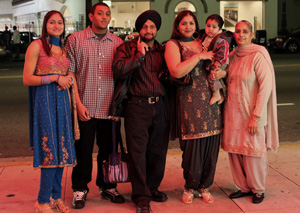 Although I am long since removed from the “bhangra scene”, still I thought this was interesting montage compiled by the Los Angeles Times in their “street culture” section, highlighting 11 great pictures on the Sights of Socal Bhangra.
Although I am long since removed from the “bhangra scene”, still I thought this was interesting montage compiled by the Los Angeles Times in their “street culture” section, highlighting 11 great pictures on the Sights of Socal Bhangra.
The thumping, driving beat of bhangra –a style of folk music from the Indian state of Punjab, the Sikh homeland — reverberated through the walls of the Wilshire Theatre in Beverly Hills Saturday as young people from around the continent converged for the SoCal Bhangra Competition (socalbhangra.com).
Check out the montage.
Often on this blog we have discussed what role our institutions should play in our lives and recently I had an opportunity to examine the issue anew. In a recent gurdwara council meeting I attended, one gurdwara decided to give a large sum of money to a group putting on a bhangra program. The group was not affiliated with the gurdwara. I will admit, I did not say anything at the time because I do not attend the gurdwara that decided to do this, but the incident did get me thinking about gurdwara funds and the concept of daswand.
When a gurdwara collects funds from the sangat – it does so under the pretence that the money is being collected to be put to some higher use, a use that we ourselves could perhaps not put it to, whether it be spiritual or practical. Usually we give the money as part of our daswand or some random seva to the gurdwara, but I think in every case it is understood that we are giving the money up to be put to a use that our Guru’s would have used it for – something necessary, something practical, and fundamentally “good.”
And as I write this post, some questions that I haven’t even answered for myself come to mind – Is the daswand I give to the gurdwara something I have a right to control – can I decide where it goes? If Sikhi is to be treated like a democracy, I would argue that absolutely I have every right to “vote” on where the funds go or at least have a chance to say something. But even in such a vote – should there be limits? Shouldn’t the funds of a gurdwara be spent on activities, which embody Sikh ideals and values? Presently, I am inclined to believe that sangat should have a say in where gurdwara funds are spent, but also that the options for spending funds should be limited to projects that actually embody and promote Sikh ideals.
But back to where we started – I brought bhangra up because it is something that can be debated – I’m not contending that it is an anti-Sikh activity, but at the same time, I don’t really think bhangra is something that perpetuates the Sikh way of life either. So I guess the dilemma in my mind in determining where the gurdwara should be spending its funds and where to draw the line…
Heads-up friends, the season of the “Spinning Wheel Festival” is about to begin across North America this autumn. Celebrating Sikh films and art, the first stop will be in New York City on Saturday, October 04, 2008 at the Asia Society & Museum (p.s. that’s next Saturday). Buy your tickets NOW! The wonderful Rabbi Shergill will be performing at the opening gala (yes I am really biased here … I heart Rabbi Shergill) and DJ Rekha will be literally “spinning” at the after party.
Films a the NYC festival will range from documentaries on Pahelwani (i.e. Panjabi wrestling) and Kaba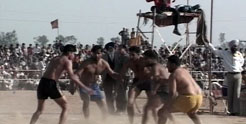 ddi-playing Canadian police officers to issues affecting the Sikh community from 1984 and post-9/11 hate crimes. There will also be short and feature films. For example, one on a young boy’
ddi-playing Canadian police officers to issues affecting the Sikh community from 1984 and post-9/11 hate crimes. There will also be short and feature films. For example, one on a young boy’ s struggle to keep his hair while his family fears the obstacles he will encounter and another on “… a young Sikh doctor struggling with the inequities of the American Health System and ultimately his own identity”. The Holy Duels of Hola Mohalla is a film looking at the Khalsa Panth.
s struggle to keep his hair while his family fears the obstacles he will encounter and another on “… a young Sikh doctor struggling with the inequities of the American Health System and ultimately his own identity”. The Holy Duels of Hola Mohalla is a film looking at the Khalsa Panth.
The films seem interesting both in content and presentation. The stories are grounded in the realities many of us encounter everyday. You can get a full listing of the films and their synopses here.
In the past, I have attended the “Spinning Wheel Festival” at one of its many North American stops and found it a great space for artists and art-enthusiasts to be exposed to Sikh creativity. I remember there being a panel discussion with the directors and the audience. We don’t have too many of these creative opportunities in our community even though we spend plenty of time and space advertising foreign medical schools in Poland, China, and the Caribbean.
I have found that some films are really hit or miss at these festivals, but it’s expected sense the focus is on cultivating and inspiring creativity; while, building a permanent Sikh film festival for years to come. Cash prizes are awarded to the “bests” in various categories. I have been told that the listing and quality of films varies across the different North American stops.
At the end of the day why not go, especially if it’s close by. I personally think it’s worth a visit as an act of supporting Sikh arts and learning about the various issues affecting our community. Sometimes we get too caught up in our own worlds and don’t realize these issues are taking place or we are in amidst of them and they become normal parts of our lives leaving very little room for reflection or exposure to others’ perceptions. Thus, it’s an 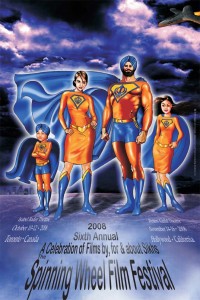 opportunity to get a fresh/new look at various issues.
opportunity to get a fresh/new look at various issues.
Lastly, the arts, from painting and photography to films and music, are our community’s soul! They help us speak in ways we can’t always articulate. So go save your soul and attend a Sikh artistic event! 🙂
Okay, enough of the attempt at convincing … the other North American stops will be:
- Toronto, Canada from October 10-12, 2008 at the Isabel Bader Theatre.
- Hollywood, California from November 14-16, 2008 at the Writers Guild Theatre.
Are ya’ll thinking of going? What have your experiences been at the various Spinning Wheel Festivals? Does anyone know of other North American stops?
p.p.s. The Toronto and Hollywood poster is really interesting isn’t it … a conversation in of itself!
So we have seen two (here and here) performances by Signature. Although most Langar-ites did not seem to enjoy the second performance as much, it impressed enough people to propel the duo into the finals of Britain’s Got Talent. In fact they were the first team to be voted in by the public.
Now, in their first interview, Suleman (often incorrectly spelled Suleiman ) Mirza and Madhu Singh shed some light and perspective on their performance:
“Our routine is about togetherness and overcoming conflict,” said the rather handsome Mirza, who has been a Jackson fan since he was six years old. “I start the act with a Western dance, and then Madhu comes on stage. I look down on him because I don’t understand his culture. But he surprises me, and he works really hard, symbolising immigration, and then we work together, and show that everyone can get on.”[link]
Heavy stuff, but I’ll buy it.
I may be stealing Anandica‘s UK thunder, but I couldn’t resist.
A month ago, we were introduced to Signature, a phenomenal dance act by a Muslim, Suleman (too often misspelled as Suleiman) Mirza and his Sikh partner, Madhu Singh on Britain’s Got Talent.
However a big question remained. After their brilliant previous performance, Simon Cowell (better known to us Yankees as Simon of American Idol fame) asked, “Now that we know what the surprise is, what do you do in the next round?” Suleman answered, “We keep on surprising you.”

Anyone want to put money for their finals presentation: “Beat It“, “Bad” (although I always liked Weird Al’s Fat better), or “Smooth Criminal.” Any other possibilities?
My vote is for “Beat It.” I just think it would fit their format much better, plus Madhu would look great in that white ‘gangsta’ bomber jacket. Suleman would HAVE to wear that red zipper leather (or pleather) jacket. I can’t lie, I had one back in the day. It might not fit, but that might make it even work better. I am sure I could dig through the old stuff and let Suleman borrow mine. The knife scene between the two would be classic. Hopefully they can get in touch with Tigerstyle to do a mix for them. So Madhu and Suleman, here is your first vote! What about the rest of you?
On this Mother’s Day let’s celebrate by listening to Punjabi music’s tributes to our mothers!
To start off, I would like to share a BEAUTIFUL song by Gurdas Mann, “Mawaa Thandiyaa Chawaa”.
There is also the song, “Maa”, sung by Malkit Singh with the beautiful line “maa daa rishtaa sab toau sachaa … maa hai rab da roop” [a mother’s relationship is the most truthful …. A mother is the beauty of God].
Please share your favorite “Maa” song and I hope you can dedicate it to her too!
Once upon a time there circulated a stupid joke that the only culture of Sikhs was agriculture. Despite the stereotyping of yesteryears, for too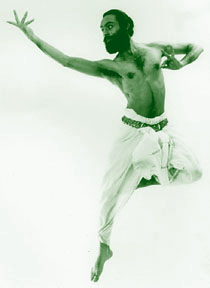 many the only associated culture to be promoted is bhangra (and sometimes giddha).
many the only associated culture to be promoted is bhangra (and sometimes giddha).
There is a growing legion that are seeking to promote Sikh arts, such as the classical kirtan tradition in Guru Granth Sahib’s ragas, visual expression (some examples were discussed on an earlier post), the art of gatka, and many more. However, still despite these and other efforts, when promoting to large audiences, we do bhangra.
With full transparency, I must admit I am not much of a fan of Bharatnatyam, but I completely agree with Bharatnatyam dancer Navtej Singh Johar‘s assertion that:
“Punjabi culture is very rich and we are just not about giddha and bhangra. Our folk tales, Sufi music and poetry traverse boundaries.”
Although I don’t agree with his elitist hierarchies of South Asian dance forms, I am intrigued by his production: ‘Fanna: Ranjha Revisited.’
So here is my question. What is life beyond bhangra? Whenever Sikh organizations have an opportunity to exhibit whether to Sikh crowds or non-Sikh crowds, what are other alternatives outside of bhangra (and gatka when certain measures don’t allow for it)? Any other thoughts or ideas?
Update:
Who knows if the “Langar-ite Leap” helped Rohanpreet gain the maximum number of votes last weekend, but it surely did help. If you voted last week, make sure you vote again. If you didn’t vote last week, make sure this week you do.
It is down to the final 3. After an acrimonious elimination last week, Rohanpreet has advanced out of the Final 4. The quest to number 1 continues. His talent brought him this far, it’s our job to bring it home. If you forgot how to vote, scroll down and remember. VOTE OR DIE! (Thanks, Puffy)
Rohanpreet needs your help. We have featured Rohanpreet, the Prince of Patiala on this blog before and now he desperately needs your help. 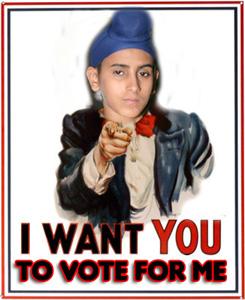 He needs your vote. Atleast for this weekend, forget Hillary, Obama, and even McCain, think Rohanpreet. (Yes, we are usually against group identity blocks, but sometimes we make exceptions)What you need to do – VOTE FOR ROHANPREET.
He needs your vote. Atleast for this weekend, forget Hillary, Obama, and even McCain, think Rohanpreet. (Yes, we are usually against group identity blocks, but sometimes we make exceptions)What you need to do – VOTE FOR ROHANPREET.
- Go to this website
- Click on the ‘Sign Up’ blue tab under the password entry area
- Fill out the registration. (Yes, it’s lame, but this one is easy, JUST DO IT!)
- Vote as many times as possible (There is no limit! Stop being lazy, you have nothing better to do, c’mon just a few more times)
- If you do it, leave a comment here. Let’s see how many we can get to vote Rohanpreet!
Voting ends Monday morning 10:30am IST, thats Sunday night 9:00pm PST.
Do it for love. Do it for music. Do it for Punjab. Do it for Rohanpreet. Just DO IT. Ok enough of this bakwas, back to your regularly scheduled broadcasting….
As you read this, you may want to press play to hear the accompanying music.
During my elementary years, my dhadhi would always give me a spoonful of a foul-substance that was called ‘sayth’ (health). For years, everyday, I would take a spoonful from the hands of my dhadhi without crying a word. I have no idea what I was taking or if it had any lasting effect, but as a kid I didn’t get sick that often and today I must admit I think I am healthy.
Many of us may have such memories, but no longer know the contents and usages of such desi remedies. Despite most of us being ‘mind-colonized’ by allopathic medicine, homeopathic medicine for preventative and minor ailment medication is being rediscovered by allopathic medical centers.
In 2005, researchers Davinder S. Sandhu and Michael Heinrich from the University of London’s School of Pharmacy published “The Use of Health Foods, Spices and other Botanicals in the Sikh Community in London” in Phytotherapy Research.
The SJ Mercury News ran a story on Dhol Di Awaz [disclaimer: I went to Cal and was part of the Berk SSA] and made the argument that in today’s multi-generational diaspoa, bhangra is the common thread that holds Punjabis together. I thought this was interesting on many levels. While the article is relatively well-written and sensitive, there were no excerpts from conversations with non-Sikh Punjabis, and certainly not with Pakistani Punjabis.
 This divide over who has a “right” to bhangra has certainly been a source of tension in the DDA-verse in the past — while many embrace bhangra as a Punjabi dance that can be shared by all across religions (and even regions), while others argue that some of the uniform elements of the dance (e.g. the phugri) require a Sikh focus. In the Bay Area, where Punjabis are somewhat divided along religious lines by neighborhoods, are we being truly honest with ourselves re: tolerance and inclusivity? Along those lines, is bhangra tying together generations of Sikh Punjabis from Indian Punjab, or is it tying together ALL Punjabis? I would argue that bhangra (and giddha), which is, in its purest essence, a dance of joy and celebration, belongs to everyone. It doesn’t see religion or region, and it also doesn’t see a “backdated” interpretation of “traditional” uniforms. This made me reflect on a question I often ask myself — where does the Punjabi begin/end and the Sikh begin?
This divide over who has a “right” to bhangra has certainly been a source of tension in the DDA-verse in the past — while many embrace bhangra as a Punjabi dance that can be shared by all across religions (and even regions), while others argue that some of the uniform elements of the dance (e.g. the phugri) require a Sikh focus. In the Bay Area, where Punjabis are somewhat divided along religious lines by neighborhoods, are we being truly honest with ourselves re: tolerance and inclusivity? Along those lines, is bhangra tying together generations of Sikh Punjabis from Indian Punjab, or is it tying together ALL Punjabis? I would argue that bhangra (and giddha), which is, in its purest essence, a dance of joy and celebration, belongs to everyone. It doesn’t see religion or region, and it also doesn’t see a “backdated” interpretation of “traditional” uniforms. This made me reflect on a question I often ask myself — where does the Punjabi begin/end and the Sikh begin?


